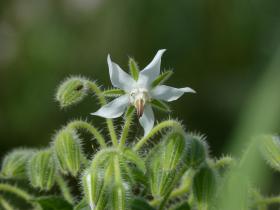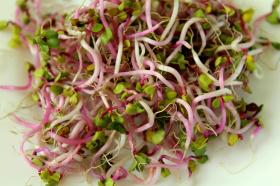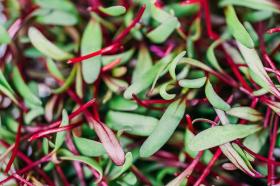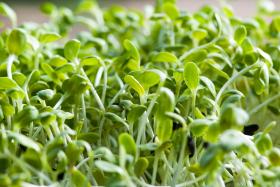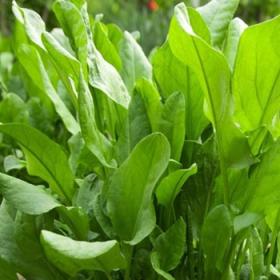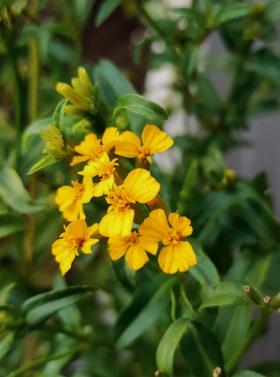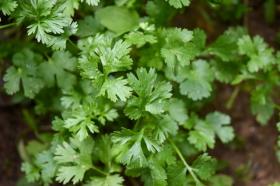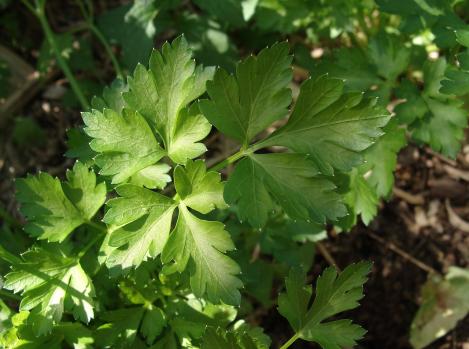
Mitsuba Mashimori, regular seeds - not treated and non-gmo
Cryptotaenia japonica
Deeply lobed leaves with a unique slightly nutty flavour. Vigorous and quite cold tolerant, bolts quickly in spring but can be sequentially sown for continuous production. Adapts well to hydroponic systems and blanching. 30cmMitsuba is a classic seasoning that is very popular in Asian cuisine. In Japan it is used as both an herb and a salad green. Traditionally used in miso soup, it is added fresh or cooked to soups, salads sushi, sukiyaki, sashimi, tempura batter, custards and rice dishes.
Mitsuba is also known as Japanese parsley or white chervil, possibly due to its subtle flavour, but it is not closely related to either one. It looks like a flat-leaf parsley with a light, pleasant fragrance and a clean fresh flavour, perhaps reminiscent of angelica, chervil and celery leaf, it tastes a little more like shiso and has few substitutes.
Enjoy cooking with all parts of this plant, its leaves, stems, seeds, and roots are edible.
Fresh leaves and stalks can be added to a mixed green salad, parboiled and served as a vegetable, or stir-fried alone or with other vegetables or meat. Mitsuba can be blanched like celery. Tender, sweeter and longer stalks will result.
Japanese chefs often use the plant's stems for special uses such as tying up sushi rolls. Cook it lightly, or add it to cooked dishes just before serving, a trio of leaves form an elegant garnish.
Mitsuba is a woodland plant that will enjoy a little shade and although generally grown as an annual, it is perennial in mild climates. It will withstand temperatures as low as minus 10°C (14°F) and with a little protection can be harvested into winter.
Mitsuba's look and aroma are distinctive, for the herb aficionado or aesthetically motivated cook, it is a great addition to the gourmet garden.
Position:
Mitsuba is a woodland plant, it is one of the few culinary herbs to flourish in shade and part shade. It will enjoy being planted between taller, sun-loving herbs whose foliage can provide shade. It prefers moist, rich soil mixed with well-rotted compost and does pretty well in pots on a shady windowsill.
Mitsuba can be planted with herbs of similar culture such as sweet cicely, chervil, bee balm, lamium, lungwort, violets, and woodland strawberries.
Sowing:
Even though it's a cool-weather plant, seeds will germinate best if you wait until after the last frost to sow.
In cold climates, seeds can be started indoors in late spring and transplant in early summer, or they can be sown directly outdoors in early summer.
In frost-free climates, sow outdoors from autumn through to late spring, but avoid planting in the hot summer months.
Sow seeds on the surface of trays of pots containing moist seed compost, space the seeds 12mm (½in) apart. Just cover with a sprinkling of sieved compost to a depth of about 2mm (1/8in).
For a continuous supply of tender young leaves, sow in succession every six weeks.
Cultivation:
Keep the soil moist at all times and protect the seedlings from direct sun.
When plants are 7cm (3in) tall, thin to about 15 to 22cm (6 to 9in) apart. The thinnings are delicious in salads.
Mitsuba is a greedy plant and would benefit from a regular feeding of organic fertiliser diluted to half-strength.
Harvesting:
Plants are ready for harvest about 50 days after sowing. Harvest by cutting the stems at ground level when they are about 12in (5in) tall.
If you are growing Mitsuba as a perennial, cut the stems for culinary use when they are 20 to 25cm (8 to 10in) tall. For next year’s crop, allow several plants to go to seed, or propagate by root division.
Packet 70 seeds


